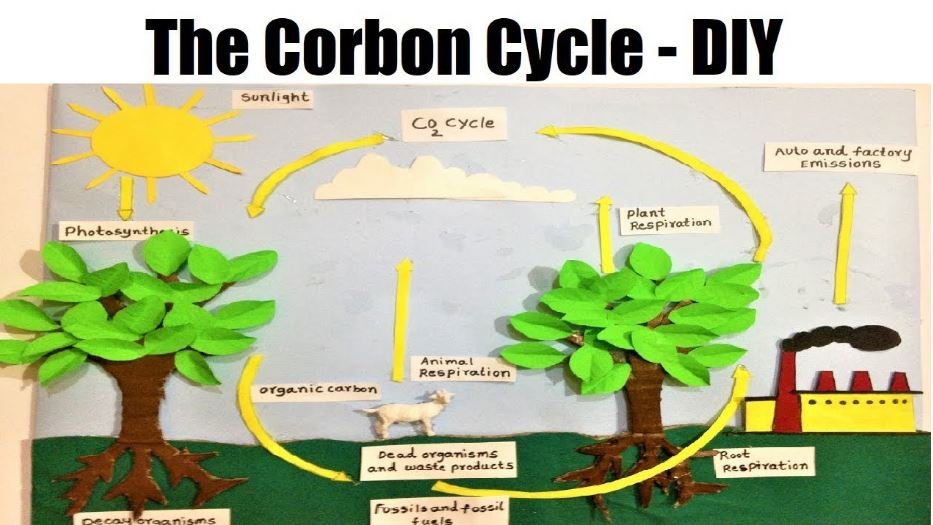Introduction:
Carbon is the most abundant element in the universe and ranked in 4th.
A carbon atom consists of 6 protons, 4 valence electrons.
It is present in the environment in many forms, like, in the rocks, it is present as limestone or graphite.
Carbon is also present in the plants and oceans and at the atmospheric layer.
Carbon is available in carbon dioxide, it is also one of the greenhouse gas to trap the heat to close to the earth.
CO2 helps the earth to hold the energy which is receiving from the sun.
In each of these, the carbon may be present in different forms mixed up with other elements if not by itself.
The movement of carbon from one area to another area emphasizes the carbon cycle.
Carbon is taken up from the atmosphere by the plants through photosynthesis and then released back into the atmosphere when the plant dies or it is consumed by any other living being.
Plants consume carbon dioxide ( CO2) and give away oxygen. Animals intake oxygen and out carbon dioxide.
Plants and animals depend on each other. It works out well. For hundreds of millions of years, plants and animals have lived and died. Their remains have gotten buried deep beneath Earth’s surface. So for hundreds of millions of years, this material has been getting squished and cooked by lots of pressure and heat.

Making of Carbon CycleModel School Science Project – Step by Step Video
In this video, we show a model of the carbon cycle for science exhibition using materials that are easily available.
Materials Used Make Carbon Cycle Model
- Hot glue gun
- Cardboard
- Pencil
- Colour Sheets – Green, yellow, brown
- Chart Sheet – White
- Paint and brush
- A4 size white papers
- Scale
You use the resource/tools page section to find the tips where you can buy these materials used at a reasonable cost.
Detailed Video Show How To Make Carbon Cycle Model – School science exhibition project
Prepare for Science Fair Questions & Answers – Carbon Cycle Model
- Name few nature’s sources of carbon?
- Carbon is found in the atmosphere mostly as carbon dioxide. It is also found in lithosphere in the form of carbonate rocks.
- Plants use carbon dioxide from the atmosphere to make food as part of photosynthesis. In the hydrosphere, carbon is found as dissolved in the ocean water and lakes.
- Explain the natural causes of carbon exchange in the atmosphere?
- Carbon is released into the atmosphere from natural causes as well as man-made causes.
- Carbon moves into the atmosphere from the oceans and lakes through the process of diffusion. Volcanic activity also releases a lot of carbon into the atmosphere.
- Explain
the man-made causes of carbon exchange in the atmosphere?
- The man-made causes of carbon exchange in the atmosphere include deforestation, burning of wood, combustion of fossil fuels.
- Explain the role of carbon in the terrestrial biosphere?
- The carbon in the terrestrial biosphere includes the carbon percentage in the living organisms both alive and dead.
- Living organisms include plants and other living organisms. Carbon leaves the terrestrial biosphere in many different ways, one been, combustion and respiration.
Conclusion:
In world, it absorbs 788 billion tonnes of carbon every year by nature. The natural emissions are balanced out by natural absorptions up to certain extent.
But because of man-made causes, this balance of emissions and absorptions is lost.
Most of the
This, the
Thus, it is very important to reduce the activities that release large amounts of carbon into the air.

